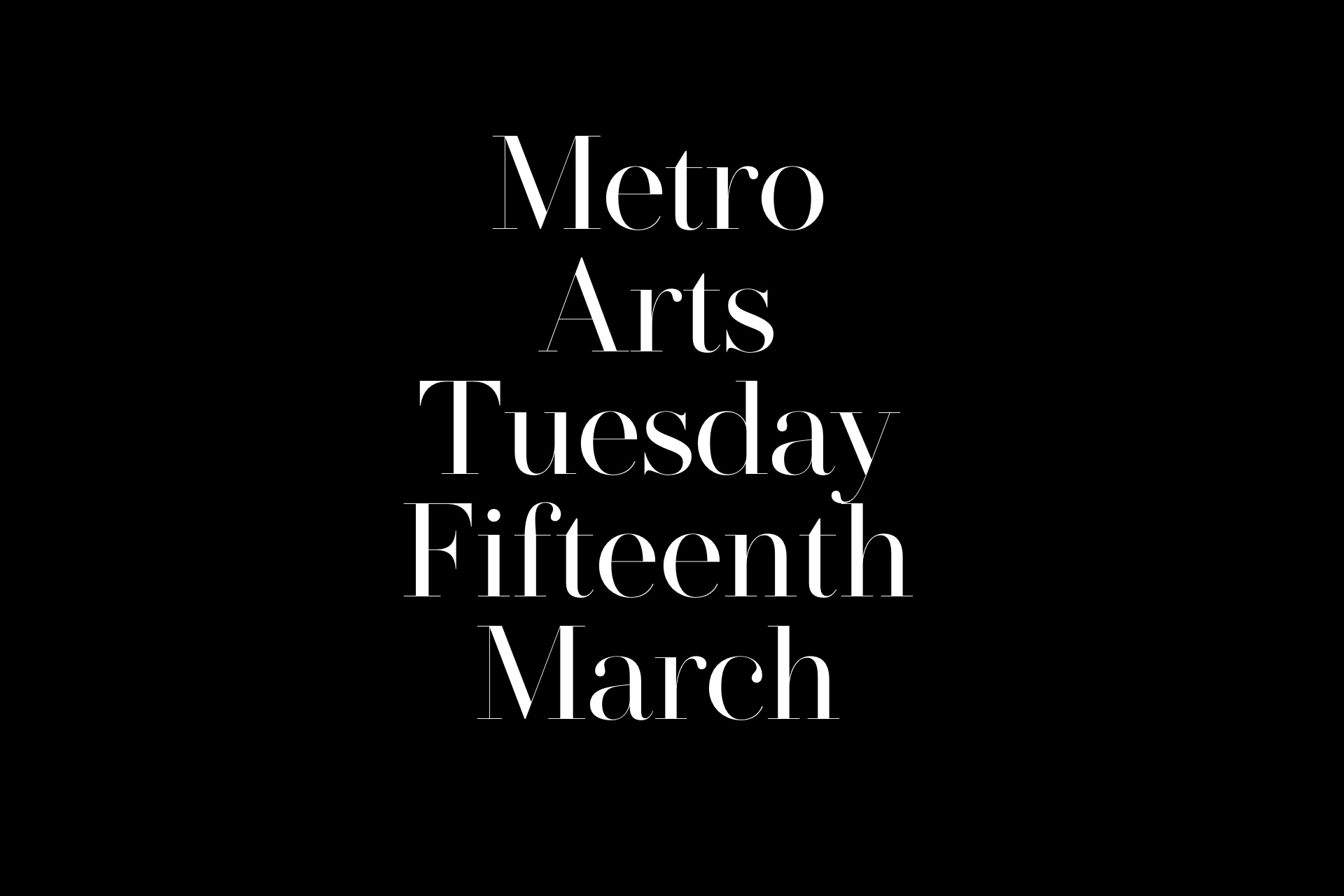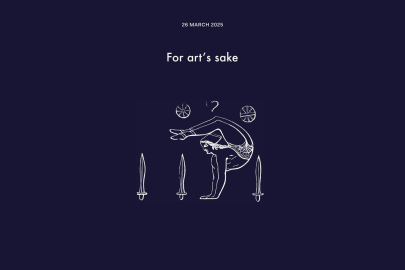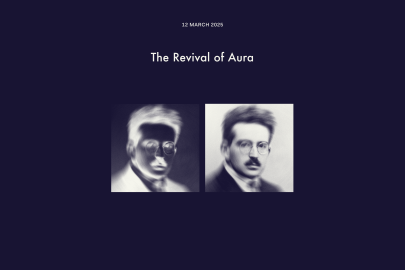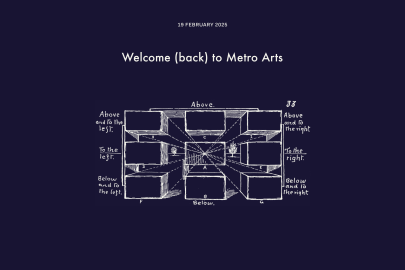Mar 15, 2022 Art
Hey!
I missed you last week! We were in the final throes of getting our next issue done and so I downed Metro Arts tools to spend time over the hard copy *drool* I forgot how much perverse satisfaction I got out of the miniscule things in life like finding rogue double spaces.
It’s my first issue as arts editor here and I’m pretty proud of the arts section given how turbulent a time it’s been for the arts. In the issue Emil Scheffmann digs into why Auckland loves to appoint international art directors, Samuel Te Kani writes on Wairau Māori Art Gallery, Vanessa Crofksey reviews Chris Tse’s latest poetry collection, Sam Hartnett shoots Emily Karaka’s studio, and I talk to Pax Assadi and Teremoana Rapley.
If this sounds like a bit of you, then can I be so bold as to suggest you get a copy when it shows up on shelves near you on Thursday.
I hope you enjoy it.
— Lana
Reckons
A couple weeks in now and I have to admit, at first I was just super excited at the prospect of starting Metro Arts, mostly to share cool arts related happenings between issues. And also a little bit of excitement at the challenge of getting back into quick turnaround critical flexing. But mostly I thought I would just be dropping my feelings into a blank google doc, clanking my nails against my keyboard, and dropping Metro Arts into a black hole of zero readers.
But that hasn’t quite been true, and actually I just wanted to say that you all have been amazing! Whether it’s been sending me condolences, or telling me that my recommendations got you over the line and actually buying a book (huge personal win), it’s been awesome having you write back so thank you. All of this to say, I’ve been thinking a lot more about newsletters, the value of writing them, the value of reading them and what it means to pay for them.
While I’ve often paid for subscriptions or memberships to magazines or online publications, before last week I’d only had a paid subscription to one individual’s newsletter — Coco Solid’s patreon. I have to say those newsletters have never let me down, including a recent mini-lecture last which was both gut wrenching and brilliant (subscribe and listen for yourself).
My subscription is a super minimal amount, it’s not something I notice slipping out of my bank anyway, and I’ve always tried to put my money where my mouth is (when I have it) in terms of financially supporting artists. But it’s always felt like chump change or symbolic support more than anything financially significant.
Then as if divinely timed with my own newsletter musings I listened to Emily Writes speaking to Duncan Grieve about her newsletter and I realised that what might feel like a small subscription to me adds up, and for some it can actually provide a living.
I don’t know, I guess I’m just really intrigued now as to what a newsletter could be, and am thinking of all the amazing voices I would pay to write directly to my inbox. And in this environment I reckon I’m coming around to the subscription/membership/user pays model.
Recommendations
I just have one recommendation this week, and that’s that you preorder the book Toi Tū Toi Ora: Contemporary Māori Art edited by Nigel Borell and in stores May 23. The book comes off the back of the landmark exhibition of the same name, and is a beautiful record of that moment in time. I’ve had a sneaky look at the book in real life and it’s stunning. Shout out to Tyrone Ohia from Extended Whānau for the design. To back up my recommendation, here is an excerpt from Moana Jackson’s foreword:
Art grew in the enlightened ferment of that challenge to imagine. It reflected the stories in the land and envisioned or recorded the possibilities that lay beyond the immediately knowable. Whether woven in feathers or carved in wood or etched into the skin, it was created in that ‘quiet space’ where even the ororua, the voices of the dark, were just mysteries to be accepted not feared.
Sometimes we hear cries, deep
in the belly of the night. Seabirds?
Kaitiaki? The imagined songs of
an imagined people?
Perhaps it is the sound
of departing spirits, or merely
the salt wind hunting
the discarded stars.
Art opened up the world of possibilities but it was also an expression of what it meant to belong to this land. It was an articulation of what people hold most dear when they are safe and free at home – a sense of faith in themselves and a belief that they can determine their own destiny.
After 1840, that independence and the feeling for limitless possibilities was increasingly threatened by colonisation. A different and violent world closed in on our people as the Crown attempted to take over the lands, lives and power that made us unique.
The very obvious injustices of colonisation, such as the wars and land confiscations, are now increasingly recognised by many people, and attempts are being made to settle some of its more blatant grievances. The breaches of Te Tiriti o Waitangi and its promise of new and equitable relationships are also now better known, although their true meaning has yet to be honoured.
But what is often less acknowledged is the fact that colonisation is more than just the stealing of land or the dishonouring of an agreement. It is a much broader process of dispossession that includes attacks on the spirit as well as the very substance of what it means to be at home – it limits possibility and takes away the confidence and freedom to imagine the new.
In this country, colonisation sought to destroy the Māori intellectual tradition as much as it fought to suppress the institutions of political and legal power, which it enshrined. It dismissed and marginalised the Māori way of seeing as much as it took away the land.
The Ngāti Koata rangatira John Hippolyte aptly summed up the totalising nature of colonisation in one of his preliminary statements as an original claimant in the Waitangi Tribunal claim on intellectual and cultural property, which included, among other things, arguments to protect the integrity of the Māori intellectual tradition. In his statement, he noted that ‘colonisation is a soul destroyer as well as a power grab, a crushing of the cultural and artistic imagination as well as a denial of political independence’.
Like everything else in colonisation, the will to destroy and silence was developed in the European intellectual tradition. It was a quite different tradition, in which the land was not a mother but a property to be owned. Its art therefore produced the ‘landscape’ as a thing to be framed and set aside, viewed for its beauty as an object rather than a part of one’s whakapapa to be nurtured and loved.
You can preorder from your choice of retailers here.
Reconnaissance
Right now:
New MISSY single Blank Page out now
Everything, Fiona Jack
The Lightship, Wed 9 Feb – Wed 30 Mar
Ex-post, Fiona Amundsen, Susan Schuppli, and Chia-Wei Hsu
Artspace Aotearoa, Fri 4 Mar – Sat 14 May
Notes for Tomorrow, curated by Tendai Mutambu with assistance from Connie Brown
Te Uru, Sat 12 Mar – Sun 12 June
Coming up this week:
Live Live Cinema: The Little Shop of Horrors – Lockdown Edition, presented by Silo Theatre,
Auckland Arts Festival and Jumpboard Productions
Online, Thur 17 Mar — Sun 27 March
Project Ofa an online concert presented by Pulotu Underworld
Online, Fri 18 March
See You On The Horizon by Sunreturn Records,
Available on Fri 25 March
Opening something? – send details here






